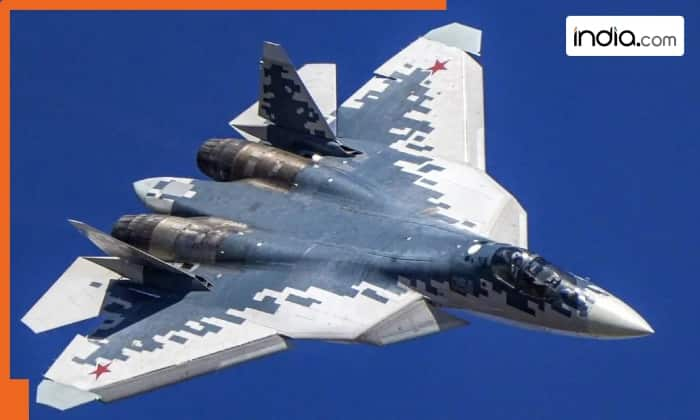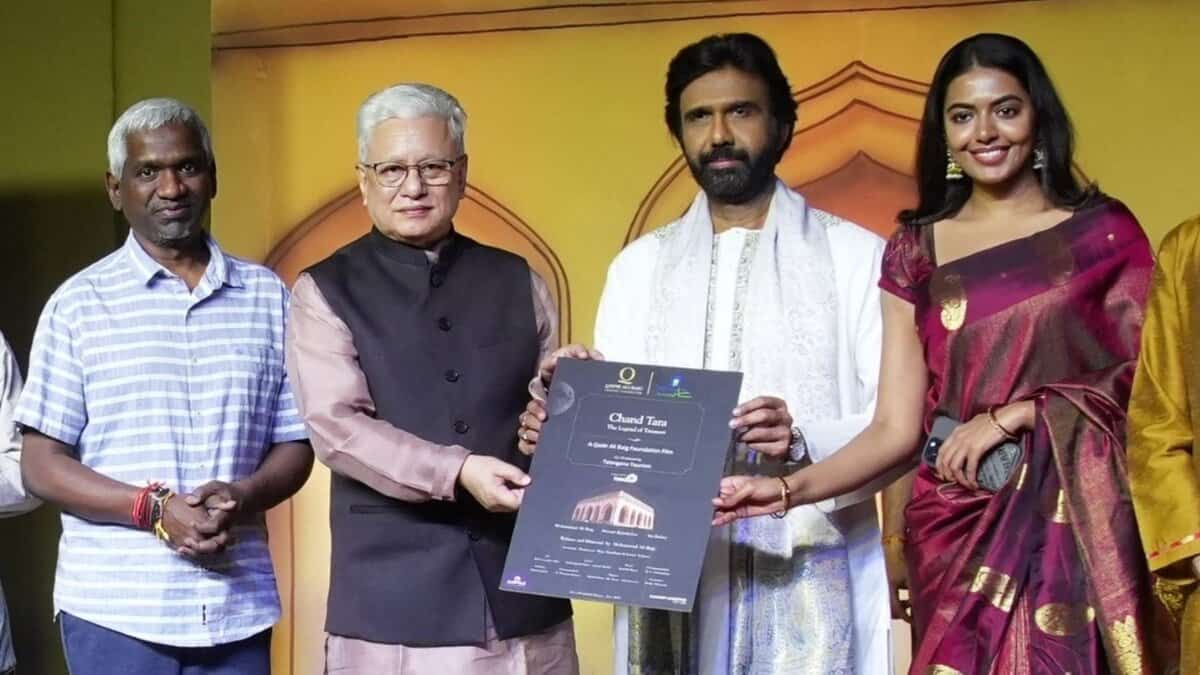The Su-57E is marketed as one of the best fifth-generation stealth fighters available, capable of matching Western jets like the American F-35 or China’s J-20.

Something unusual is happening in the world of defence deals. India, long known as one of Russia’s biggest weapons buyers, has just sent Moscow a message that nobody expected—your technology isn’t as advanced as you claim, and we have better alternatives made right here at home. The issue at the heart of this confrontation is the Su-57E stealth fighter jet, which Russia has been trying to sell to India as one of the world’s most advanced fifth-generation aircraft. But India isn’t impressed, especially with one critical component—the radar system.
According to reports from Defence Security Asia, India has made it clear that it wants to replace the Su-57E’s Russian-made N036 “Byelka” AESA radar with its own indigenous systems before signing any purchase agreement. This demand has reportedly upset and worried Russian defence officials, and for good reason. The radar is not just any component—it’s the eyes and ears of a modern fighter jet, responsible for detecting enemies, tracking targets, and guiding weapons. By rejecting Russia’s radar, India is essentially saying that the core technology of the Su-57E doesn’t meet its standards. For a country that has built its defence reputation on cutting-edge systems, this is a bitter pill to swallow.
Indian defence experts have been quite blunt about why they don’t want the Byelka radar. The problem, they say, lies in its outdated technology. The Byelka uses Gallium Arsenide, or GaAs, which is an older semiconductor material that has serious limitations in modern air combat. GaAs-based radars can’t handle high temperatures very well, they consume more power, and they don’t offer the range or jamming resistance that today’s advanced fighters need. In contrast, India has developed its own AESA radars using Gallium Nitride, or GaN, technology—a material that has become the global standard for next-generation military systems. GaN radars are more powerful, detect targets at longer ranges, produce clearer signals, and are far better at resisting electronic attacks during warfare. India’s Uttam AESA radar, already flying on Tejas fighter jets, and the Virupaksha radar being installed on upgraded Su-30MKI aircraft are both built on this superior technology. So from India’s perspective, why would it accept an inferior foreign system when it has better ones at home?
This isn’t just a technical disagreement. It’s a bold statement about India’s growing confidence in its own defence manufacturing capabilities. For decades, India has been dependent on foreign suppliers for advanced weapons, often accepting whatever technology was offered without much questioning. But those days appear to be over. Under the Atmanirbhar Bharat initiative, which promotes self-reliance in defence production, India is pushing to reduce its dependence on imported systems and ensure that it controls the critical technologies in its military arsenal. By insisting on using its own radar, India is telling the world—and Russia in particular—that it no longer sees foreign systems as automatically superior, especially in crucial areas like sensors and electronic warfare.
Russia, meanwhile, finds itself in a difficult position. The Su-57E is marketed as one of the best fifth-generation stealth fighters available, capable of matching Western jets like the American F-35 or China’s J-20. But if India, a major potential buyer, publicly rejects its radar system, it raises serious questions about the jet’s actual capabilities. Can the Su-57 really compete with the best in the world if its radar technology is considered outdated? Defence Security Asia reports that Russian officials are concerned about the broader implications—if India’s demands aren’t met, the deal might fall through entirely, and the Su-57’s global reputation could take a major hit. Losing India as a customer would be a significant blow, especially at a time when Russia’s defence industry is already struggling under Western sanctions and the pressures of ongoing military commitments.
But there’s more to India’s position than just technical superiority. This dispute is deeply connected to India’s long-term strategic goals, particularly the development of its own Advanced Medium Combat Aircraft, or AMCA. India wants to build a defence ecosystem where it can independently design, maintain, and upgrade future fighter jets without relying on foreign approvals or proprietary systems. By insisting on GaN-based radars in any imported aircraft, India is ensuring that it stays at the forefront of modern defence technology. GaN semiconductors are now the global standard for advanced radars and electronic warfare systems, used in cutting-edge platforms like the F-35, China’s KLJ-5 radar, and Japan’s F-X fighter program. India is joining this elite group, and it’s making sure that any new fighter it buys is compatible with this technological direction.
This confrontation is also happening against the backdrop of India’s changing defence procurement strategy. India is no longer putting all its eggs in one basket. It’s buying weapons from multiple countries—French Rafale jets, American P-8I surveillance aircraft, Israeli drones—and carefully balancing its relationships with different suppliers. This diversification gives India more bargaining power. Russia knows that if it doesn’t accommodate India’s demands, New Delhi might simply turn to Western suppliers who are already offering advanced systems and closer industrial partnerships. The United States has reportedly offered India the F-35A stealth fighter, a proven platform with combat experience and cutting-edge technology. France and other European nations are also eager to deepen defence ties with India. Russia cannot afford to be rigid in these circumstances.
To its credit, Russia appears to be trying to address India’s concerns. According to reports, Moscow has agreed to share full source codes with India, which would allow Indian engineers to integrate their own equipment and software into the Su-57E. This is a significant concession, as source codes are among the most closely guarded secrets in defence technology. With access to these codes, India would be able to customize the aircraft to work seamlessly with its existing systems and add Indian-made weapons like the Astra long-range air-to-air missile. Russian officials have also suggested that the Su-57E could incorporate features from India’s Super-30 upgrade program, which is turning Su-30MKI fighters into near fifth-generation platforms with GaN radars and advanced mission computers. Russia has even offered to produce the Su-57E in India under licence, using the same production lines that have already built over 222 Su-30MKI jets. Russian Ambassador Denis Alipov confirmed this proposal, stating that Russia is not just offering to sell the aircraft but to manufacture it jointly with India, with technology transfer and support for setting up the necessary facilities.
These offers are attractive, but they come with a backdrop of past frustrations. India’s experience with France over the Rafale fighter has made it extremely cautious about source code access. Even after spending about ₹79,560 crore on 36 Rafale jets in 2016, India has struggled to integrate its own weapons and systems into the aircraft because France’s Dassault Aviation refuses to share full source codes. French restrictions on accessing the Modular Mission Computer and the Thales RBE2 AESA radar software have limited the Rafale’s adaptability to India’s specific needs. This bitter experience has made India firm on one point—any future fighter jet deal must include full source code rights from the beginning, ensuring complete compatibility with Indian technologies. India doesn’t want to repeat the Rafale situation with the Su-57E.
The radar dispute has thus become more than just a technical issue—it’s a test of whether Russia can adapt to a new era in defence partnerships. Big buyers like India no longer want just off-the-shelf weapons. They want joint development, local production, and control over key technologies as part of the deal. India is using its massive defence market as leverage, knowing that Russia cannot afford to lose such an important customer. At the same time, Russia is struggling to maintain its image as a supplier of cutting-edge military technology while facing economic pressures and competition from both Western and Chinese manufacturers.
What makes this situation particularly interesting is that it represents a fundamental shift in the India-Russia defence relationship. For decades, India has been a major importer of Russian weapons, often accepting systems with limited customization options. But now, India is no longer just a buyer—it’s a confident partner demanding equal technological standards and the right to modify what it purchases. This change reflects India’s growing industrial capabilities and its determination to become a major defence manufacturer in its own right. If India succeeds in fitting its own radar onto the Su-57E, it will set a new precedent for future deals—Indian technology must be included as a non-negotiable condition.
The outcome of this dispute will have implications far beyond the Su-57E purchase. It will signal whether Russia can remain India’s primary defence partner in an era where India has many options and growing self-confidence. It will also show whether India can successfully assert its technological independence while maintaining strategic relationships with traditional suppliers. As modern air combat evolves toward AI-based systems, GaN technology, and networked warfare, India’s insistence on full system control and source code access could reshape how defence partnerships work across the Indo-Pacific region. The world is watching to see if Russia blinks first, or if India walks away to explore other options. Either way, the message is clear—India is no longer willing to compromise on technology, and it has the confidence and capability to back up that position.
——––E.O.M
(Girish Linganna is an award-winning science communicator and a Defence, Aerospace & Geopolitical Analyst. He is the Managing Director of ADD Engineering Components India Pvt. Ltd., a subsidiary of ADD Engineering GmbH, Germany.)

















































